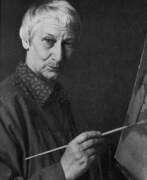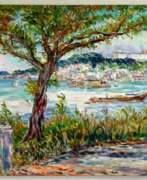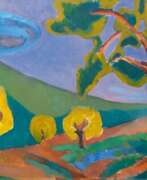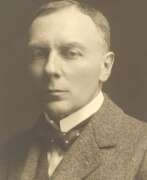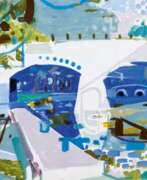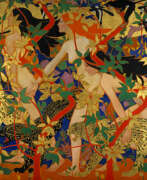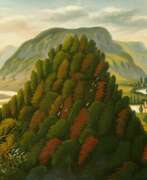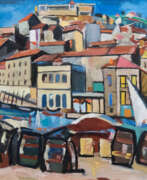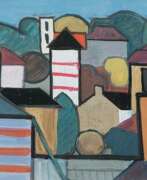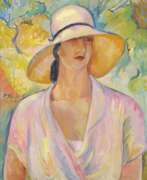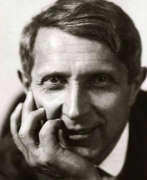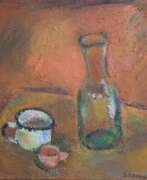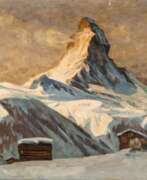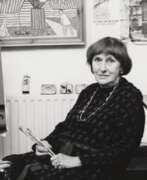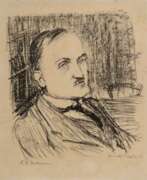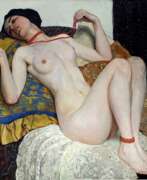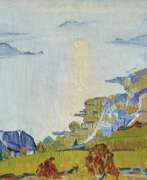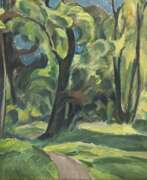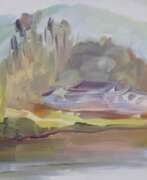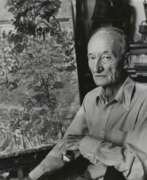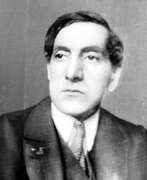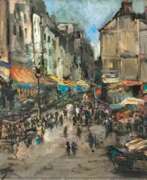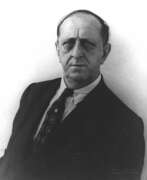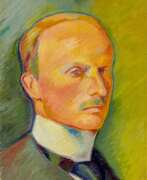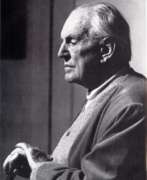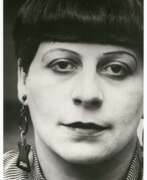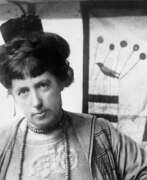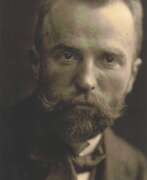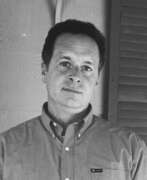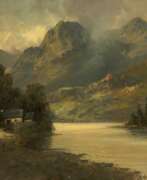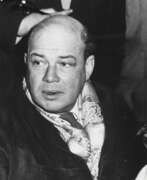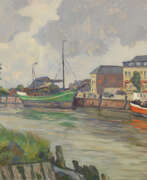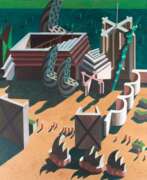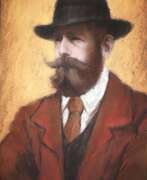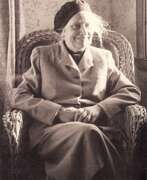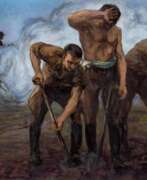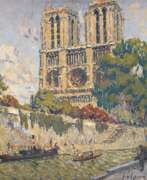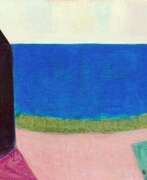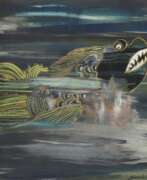Landscape painters Modern art


Wäinö Waldemar Aaltonen was a Finnish artist and sculptor, celebrated for his contributions to the cultural landscape of Finland, particularly during the early years of the nation's independence. Born in 1894, Aaltonen's works are distinguished by their nationalist themes and monumental scale, often reflecting the spirit and identity of Finland. His artistic journey was notably influenced by a trip to Italy in 1923, where he encountered cubist and futurist art, elements of which he integrated into his own work.
Aaltonen's sculptures are key features in Finland's public spaces, including the well-known statues in the House of Parliament and numerous works in Turku, such as the "Lily of Turku" and a statue of the runner Paavo Nurmi. His mastery is also showcased at the Wäinö Aaltonen Museum of Art in Turku, which houses a significant collection of his sculptures, paintings, and drawings. This museum not only celebrates his legacy but also serves as a central repository for his extensive works, donated by Aaltonen himself.
For those interested in exploring Aaltonen's work and the impact of Finnish sculpture, a visit to the Wäinö Aaltonen Museum of Art is invaluable. The museum provides a comprehensive view of his artistic evolution and contributions to Finnish art. For updates on exhibitions and events related to Wäinö Aaltonen, consider signing up for notifications through the museum's mailing list, ensuring you stay informed about new insights and offerings related to this pivotal artist.
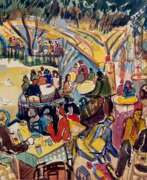

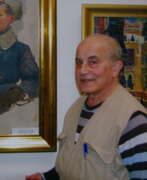

Victor Ashotovich Abramyan (Russian: Виктор Ашотович Абрамян) was a Soviet and Russian artist of the second half of the twentieth and early twenty-first centuries. He is known as a painter, a representative of the Leningrad school.
Victor Abramyan created portraits, landscapes, still lifes and genre paintings. He participated in exhibitions from the early 1970s in Leningrad. Among his famous works are "Blockade everyday life", "Still Life with a Centennial", "Leningrad. 1942. Women on Guard in the besieged city", "Young Guests" and others.
Abramyan's works are in museums and private collections in Russia and many other countries.
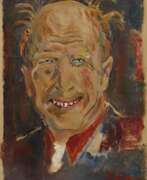

Lucien Adrion was a French post-impressionist painter, draughtsman and printmaker. He is known for his depictions of the French countryside and beaches, as well as of Parisian life, including landscapes, still lifes, figures and landmarks.
Throughout his career, Adrion exhibited his work at the Salons in Paris, where he was praised for his ability to capture the movement and transience of city life.
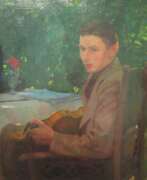

Friedrich Ahlers-Hestermann was a German painter and art writer from Hamburg. He was a member of the Hamburgische Künstlerclub of 1897, as well as of the Hamburg artist's workshop of 1832 and pupil of the Académie Matisse in Paris. After the First World War, he was a co-founder of the Hamburg Secession.
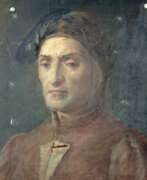

William Herbert Allen was an English landscape watercolour artist whose career spanned more than 50 years from the 1880s to the 1940s. He was invariably referred to as «W. H.» rather than by his given name. He produced several thousand watercolours, chalk and pencil sketches mainly of the landscapes, traditions and people of West Surrey and North-east Hampshire. In addition, he produced scenes of other parts of the British Isles and various parts of continental Europe. These works included commissions in Italy for the Victoria and Albert Museum, Dublin, Edinburgh and Preston museums. He was made a member of the Royal Watercolour Society in 1903 and the Royal Society of British Artists in 1904 and his work was exhibited at the Royal Academy in 1927.
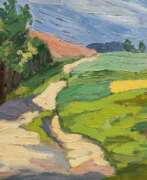

Louise Elisabeth Andrae was a German Post-Impressionist landscape painter and watercolorist. She studied with two landscape painters; Gustav Adolf Thamm in Dresden and Hans von Volkmann in Karlsruhe. She settled in Dresden, but spent long periods on the island of Hiddensee. There, she helped organize a group known as the Hiddensoer Künstlerinnenbund, an association of women artists that included Clara Arnheim, Elisabeth Büchsel, Käthe Loewenthal and Katharina Bamberg. They were regular exhibitors at an art venue known as the Blaue Scheune (Blue Barn), established in 1920 by Henni Lehmann. She also exhibited frequently with a group known as the Kunstkaten in Ahrenshoop.Wikipedia


Jean Arp, born Hans Peter Wilhelm Arp, was a German and French poet, painter, graphic artist and sculptor. one of the founders of the Dada movement in Zurich.
Arp used abstract forms in his work and experimented with different materials such as wood, metal and stone. He was also known for his poetic works, in which he applied a method of randomly selecting words, called the "clutter method". Arp believed that this method helped him express his thoughts more precisely and originally. Arp's influence on the arts is still significant today.
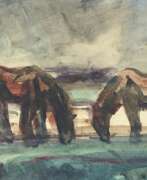

Unica Bachmann-Calcoen (Dutch: Unica Bachmann-Calcoen) was a German-Dutch artist who worked with portraits and depictions of animals, especially horses. She was a pupil of Marie de Jonge (1872-1951) and Martin Monnickendam (1874-1943).
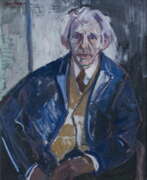

Tom Beyer is a German artist.
Beyer studied at the Düsseldorf School of Applied Arts, traveled throughout Europe, in 1931 opened a studio in Berlin and joined the Communist Party. Although the National Socialists who came to power in Germany in 1937 forbade him to exhibit, from 1939 to 1945 Beyer took part in World War II as a Wehrmacht soldier.
After the war, Beyer led an active social and artistic life. He was also a member of the Association of Visual Artists of the GDR and became its chairman in 1950. As a member of the SED, Beyer reflected in his works the socialist construction in his country, depicting nature and people. He created a large mural for the Löwenschen Saal hall in the Stralsund town hall. From 1972 he taught part-time at the Berlin-Weißensee School of Art.
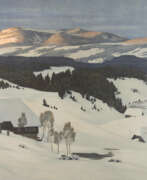

Karl Biese was a German landscape painter, draftsman, and lithographer. After initially working as a theater painter, he received a scholarship to study at the Karlsruhe Academy of Fine Arts in 1883. Biese later returned to Hamburg, where he became a master painter and established his own business. Biese was one of the founders of the Karlsruhe Artists' Association and created lithographs for the association's print workshop. He found inspiration for his nature-themed works during his travels around Karlsruhe, the Black Forest, the Moselle region, and northern Germany. Biese was particularly known for his atmospheric paintings, especially his winter scenes. He primarily worked with oil painting and lithography mediums. Biese also designed collectible images for Stollwerck chocolate company's albums.
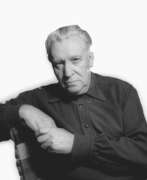

Edmond Bille was a Swiss artist. Bille engaged in intense and varied activity as painter, engraver, stained glass artist, journalist, writer, and politician. He is the creator of the stained glass windows around the altar of the Cathedral of Lausanne, capital of the Swiss canton of Vaud.


Yves Brayer was a French painter and lithographer known for his landscapes, portraits and still lifes.
Brayer studied at the École Nationale Supérieure des Beaux-Arts in Paris and then in Rome. He was influenced by classical art and inspired by Mediterranean landscapes, which he often depicted in his paintings. He was also interested in the culture of ancient Greece, which influenced his work.
Brye's early work was inspired by the Cubist and Surrealist movements. He was a founding member of the Paris School, a group of artists working in the French capital in the mid-twentieth century. He was also a member of the French Academy of Fine Arts and a Knight of the Legion of Honour.
Bryeux's work has been exhibited in prestigious galleries and museums around the world, including the Louvre in Paris, the Museum of Modern Art in New York and the National Museum of Western Art in Tokyo. His paintings are in many private collections.
Over the course of his career, Brye has received numerous awards and honours, including the Grand Prix de Rome and the Prix de l'Institut de France. He is considered one of the most important French artists of the 20th century.


Fyodor Fyodorovich Buchholz (Russian: Фёдор Фёдорович Бухгольц) was a Russian artist of German origin in the late 19th century and the first half of the 20th century. He is known as a painter, graphic artist and teacher.
Fyodor Buchholz painted mainly on historical themes and genre paintings, as well as portraits and landscapes. At the end of the XIX century, the artist was fascinated by Art Nouveau. After the revolution of 1917 he began to create works on the themes of social construction.
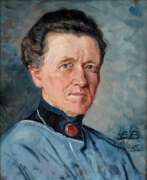

Elisabeth Büchsel, full name Elisabeth Charlotte Helene Emilie Büchsel, was a German artist. She studied painting in Berlin, Dresden, Paris and Munich.
Elisabeth Büchsel painted mainly portraits and landscapes of Rügen and Stralsund. From 1904 she lived and worked on the island of Hiddensee from spring to autumn.
Büchsel was a member of the Association of Visual Artists of Germany.
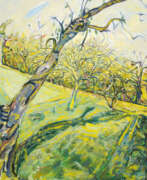

Bernard Chaet was an American artist. Chaet is known for his colorful, dynamic modernist paintings and masterful draftsmanship, his association with the Boston Expressionists, and his 40-year career as a Professor of Painting at Yale University. His works also include watercolors and prints. In 1994, he was named a National Academician by the National Academy of Design. Chaet's works are in the permanent collections of many important museums. Chaet is known for his association as a first generation Boston Expressionist. Having studied with Zerbe, a father of Boston Expressionism, Chaet's early works certainly adhere to the techniques and philosophy of the school.


Plinio Colombi was a Swiss painter and graphic artist. For his paintings he often chose landscape motifs of the Lake Thun region and also painted still lifes. His works include prints, paintings, etchings, aquatints, lithographs, woodcuts, drawings, and posters.
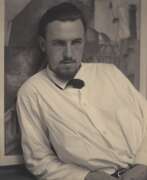

Konrad Cramer was a German-born American painter. He was trained at the Academy of Fine Arts in Karlsruhe, and he emigrated to the United States in 1911. A naturalized U.S. citizen, he is "often credited as being an important link between German and American modernism in art."
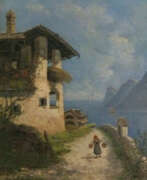

Gabriele Maria Deininger-Arnhard was a German-Austrian painter.
Deininger-Arnhard painted mostly landscapes from the Tyrolean and Bavarian regions, but also depicted rural interiors, in oil and watercolor. She was best known for her depictions of the Ötztal. According to her own account, she painted more than 1,000 large-format oil paintings. These may be found in collections in various cities in Germany, Tyrol, Vienna, Paris, Holland, Switzerland, the Czech Republic, Hungary and North America.
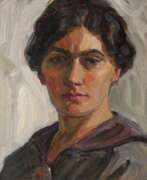

Selma des Coudres (Plawneek) a Latvian-born German painter, blended elements of Art Nouveau, Expressionism, and Japonism in her artworks. After studying under Elise Jung-Stilling, she became a teacher and continued her art education with Janis Rozentāls and Wilhelm Purvītis. Selma illustrated books and participated in exhibitions in Riga, Munich, and other locations. Following her marriage to Adolf des Coudres in 1921, she settled in Fürstenfeldbruck, where she co-founded the Kunstverein Fürstenfeldbruck. To sustain herself financially, she focused on portraits and floral still-lifes.


Alexander Eckener was a German painter and graphic artist. He received his initial artistic training and inspiration from Jacob Nöbbe, a local artist in Flensburg. With his support, Eckener was able to study at the Academy of Fine Arts, Munich, from 1888 to 1892. After graduating, he returned to his home town and became part of the Ekensund Artists' Colony. In 1899, he went to Stuttgart and was accepted by the State Academy of Fine Arts. There, he was a master student of Leopold Graf von Kalckreuth, who introduced him to the art of etching; another genre in which he became proficient. After 1908, he taught at that Academy himself and was named a Professor in 1912. He took on the position of Professor of lithography and woodcuts in 1925.
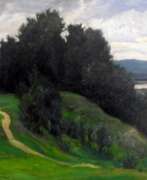

Karl Felix Eisengräber was a German painter. He began his studies at the Leipzig Academy of Art, after which he studied at the Academy of Fine Arts, Munich under Ludwig von Herterich and Paul Hoecker. He was a member of the Luitpold Group, which had split off from the Munich Artists' Association, and of a group called The Independents (Die Unabhängigen). After World War I, by arrangement with Springer Verlag, Eisengräber provided the illustrations for new editions of medical books by Ferdinand Sauerbruch.
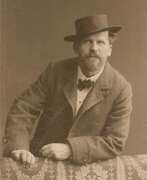

Richard Hermann Eschke was a German marine and landscape painter.
Richard Eschke became known as a pupil of his father Hermann Eschke and the Berlin Academy. Eschke lived in England for several years, where he made studies for a number of paintings.
Richard Eschke was awarded the small gold medal of the Berlin Art Exhibition.
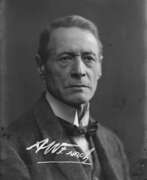

Alfred William (Willy) Finch was a ceramist and painter in the pointillist and Neo-Impressionist style. Born in Brussels to British parents, he spent most of his creative life in Finland. In 1883 he became a founding member of Les XX, a group of twenty Belgian painters, designers and sculptors, who rebelled against the prevailing artistic standards and outmoded academism. He was impressed by the works of Georges Seurat and Paul Signac and changed his own painting style from a more realistic approach into a pointillistic style. In the following years, Finch became one of the leading representatives of his style in Belgium, along with Théo van Rysselberghe. During the early 1890s Finch switched careers from painting to pottery, upon the realization that he couldn't make a living by painting. In 1897, invited by count Louis Sparre, Finch moved to Porvoo, Finland, to head the Iris ceramics factory, and influenced the development of the local Jugendstil. After the factory was closed, Finch resumed his painting career.
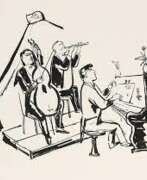



Hermann Ernst Friedrich Garling was a German painter who specialised in landscape painting.
Hermann Garling's work includes rural views of the Karlsruhe countryside, city scenes and mountain landscapes.


Ida Gerhardi was a German artist of the late nineteenth and early twentieth centuries. She is known as a painter, representative of classical modernism.
Ida Gerhardi at the beginning of her career worked mainly in the genre of landscape, was an adherent of the Barbizon school of painting. Later she began to specialize in portraits, then switched to marine subjects, and in the last years of her life she created still lifes and genre paintings. Beginning in 1900, she was strongly influenced by the Post-Impressionists and Fauvists, and from 1911 by Rhenish Expressionism.
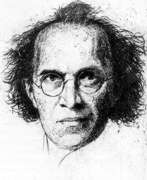

Heinrich Gottselig was a German painter of the first third of the twentieth century of Jewish origin who worked in Germany, France and Russia. He is known as a portrait and landscape painter, impressionist and modernist, and is considered one of the best representatives of the Frankfurt school of landscape and portrait painting.
Gottselig gained recognition at the age of 23 with debut works including portraits and landscapes. In 1913, he was recognized as one of the best representatives of his painting school. In addition to painting, the artist also practiced copper engraving.
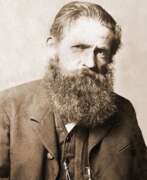

Johann Georg Grimm was a German painter of the mid-nineteenth century. He is known as a landscape painter and designer, most famous for his works created during his stay in the Brazilian Empire.
Georg Grimm is recognized as the preeminent master of Brazilian art and is considered a leader of modernism in that country. He had a significant influence on the development of modern painting in Brazil, founding a plein air school and becoming a teacher. His naturalistic landscapes are recognized as a valuable legacy and many are in private collections. In Germany he remained little known.


Georg Grulich was a German painter.
In Düsseldorf, he documented the reconstruction after the Second World War and the advent of modernism, created monumental cityscapes of the new state capital and is still considered "the" Düsseldorf city painter of the post-war and reconstruction years. His works were shown in exhibitions in Venlo, Maastricht, Oostende, Geneva, Montecatini, Krakow and Moscow. He also participated in the design of the Düsseldorf carnival. In addition, Grulich was a member of the artists' association Malkasten, the Rhenish Secession (1947-1957) and district chairman of the West German Artists' Association (1957-1971).
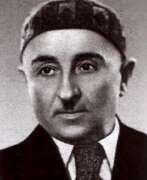

Gabriel Mikaelovich Gyurdzhyan (Armenian Գաբրիել Գյուրջյան) was an Armenian painter. People's Artist of the Armenian SSR (1945), art historian, teacher. One of the founders of the Soviet Armenian fine arts.


Karl Georg Hänel was a German landscape and animal painter and commercial artist.
Hänel undertook study trips to Mecklenburg, Bavaria, Switzerland and the Salzburg Alps. He mainly worked as a landscape and animal painter. As a commercial artist he created advertising posters, calendar pages and advertisements.
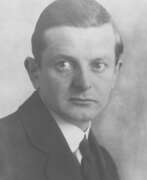

Franz Heckendorf was a German painter and graphic artist who was particularly successful during the Weimar Republic. During the National Socialist era, he was sentenced to ten years in prison after helping Berlin Jews threatened with deportation to extermination camps to escape to Switzerland.
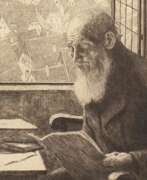

Franz Hecker was a German painter and graphic artist. He studied painting at the Dusseldorf Academy of Art and at the Académie Julian in Paris with William Adolphe Bouguereau.
Many of Franz Hecker's works focused on scenic motifs and Berzenbrück personalities and were inspired by Impressionism . In all, he created more than a thousand works in different techniques. He also painted murals in the conference rooms of the Berzenbrücke town hall. Some of Hecker's early works were considered "degenerate" by the Nazis, and in 1937 they were confiscated and destroyed.
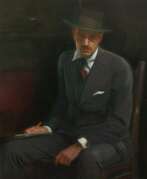

Ernest Martin Hennings (Jr.) was an American artist and member of the Taos Society of Artists. In 1901 that Hennings began taking classes at the School of the Art Institute of Chicago, which was largely based on the great European art schools and made particularly emphasis on the importance of drawing. Hennings took up work as a commercial artist, mostly painting murals and portraits around Chicago. Hennings' primary interest was in portrait painting, with his primary subject being the Native Americans living in and around Taos Pueblo. In 1922 he was awarded the Clyde M. Carr Prize from the Art Institute of Chicago as well as the Institute's Fine Arts Building Prize. By the 1920s, the now established painter was building his reputation on the national scene, with exhibitions and awards including. Many art collectors throughout America sought out his paintings. Today paintings by Hennings are housed in the Smithsonian American Art Museum, Stark Museum of Art, Booth Western Art Museum etc.


Hanns Herzing was a German painter. He is best known for his high mountain views. He left mainly mountain and high mountain paintings, which he exhibited in several studio exhibitions on the subject of mountain landscapes. One of his best-known paintings was the Matterhorn reflected in the Riffelsee, which was distributed as a reprint on postcards.
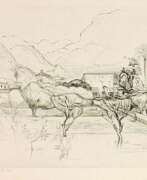

Friedrich Leonhard Heubner was a German commercial artist, painter, draftsman and illustrator. In 1914 he was a founding member of the artist group The Six. In 1916 he was represented in the Ernst Arnold Gallery at the "Second Exhibition of Dresden Artists Who Are in Army Service". From 1920 he was a member of the Munich Secession and regularly exhibited there. Heubner quickly freed himself from Munich Art Nouveau and developed his own sweeping style of drawing. There were caricatures for the youth, the gazebo and the Simplicissimus. Heubner first appeared as a poster designer. In the 1920s he turned more to book illustration and created etchings and lithographs. In his paintings of the 1920s, which he created primarily while traveling, he came to an expressive view of the landscape. His drawings, which show the destroyed Munich and its reconstruction from 1945 onwards, are of cultural-historical importance, many of which are now in the collection of the Munich City Museum.
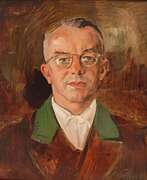

Peter Hirsch is a German painter, graphic artist and draftsman as a child private lessons in painting, apprenticeship as a lithographer, studied at the Munich Academy. He loaded exhibitions in the Munich Glass Palace and in the Kunstverein, ostracized as "degenerate" in Germany 1933-45 partly active in the USA, Canada, the Netherlands, Italy, England, France, Hungary and Switzerland, from 1944 temporarily relocated to the Schliersee, before 1930 -1969 lecturer at the Munich Adult Education Center.
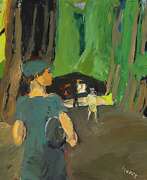

Erik Hoppe was a Danish painter who is remembered for his paintings from the Copenhagen area, especially those with young ladies in the park at Valby.
Hoppe also mastered the effects of light and colour. His earlier work is typified by greens and dull shades but later he produced compositions benefitting from bright sunlight. His style reflects the peculiarly Danish form of modernism, initially based on the sombre everyday-realism.
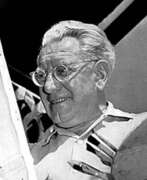

Ernst Huber, an Austrian painter, was a significant figure in Austrian Classical Modernism. Born in Vienna in 1895, Huber initially trained as a typesetter and lithographer, but he was predominantly self-taught as a painter. His artistic journey began with his first exhibition success in 1919, which caught the attention of the notable Viennese architect Josef Hoffmann. Huber's membership in the Zinkenbacher Malerkolonie, alongside fellow artists like Ferdinand Kitt and Franz Zülow, was a highlight of his career.
Huber's art predominantly features landscapes, with his early works showcasing regions such as Lower Austria, Upper Austria, and the Salzkammergut. His travels in the 1920s expanded his repertoire, influencing his paintings significantly. Huber was adept in various mediums, including oils, watercolors, reverse glass, and tile paintings, as well as book illustrations. His talent was recognized with several awards, including the Austrian State Award and the Honour Prize of Vienna.
One of his notable works, "The Bridge," created in 1919 using brush and black ink, ink wash, and watercolor with black chalk, is part of the collection at The Metropolitan Museum of Art. This piece reflects his unique style and contribution to the art world. Huber passed away in 1960 in Vienna, but his legacy continues, with his works featured in numerous museums and galleries.
Ernst Huber's works are sought after by collectors, auctioneers, and art experts. If you are interested in staying updated about sales and auction events related to Ernst Huber's works, I invite you to sign up for our updates. This subscription will keep you informed about new product sales and auction events specifically related to Ernst Huber's art.
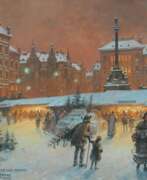

Georg Janny was an Austrian landscape painter and set designer.
He worked as a scene painter in the studios of Carlo Brioschi and Johann Kautsky, alongside Alfons Mucha, and was a member of the Dürerbund.
He also painted landscapes and figures, including scenes from fairy-tales or imaginary worlds that are reminiscent of the works of Arnold Böcklin or Gustave Doré.


Gustav Kampmann was a German landscape painter and graphic artist. His work includes landscape paintings and lithographs, rarely with persons, sometimes with architectural elements. Kampmann has developed a personal, highly idiosyncratic style that impresses us with its openness, merely addressing motives, and spontaneous gesture. His works have a painterly freedom and a degree of abstraction that was not typical for that time.


Alexander Kanoldt was a German painter of the first half of the twentieth century. He is known as a painter, landscape and portrait painter, a representative of the New Materiality movement.
Alexander Kanoldt was one of the founders of the New Munich Art Association and the Blue Rider group. His style evolved from Neo-Impressionism to magic realism, to depicting plants, objects, landscapes and people in angular forms. During the Nazi regime, he tried to adapt to the styles in demand, but many of his works were confiscated as belonging to "degenerate art."
Kanoldt was a professor at the Berlin Academy of Art and director of the State School of Art in Berlin until his retirement in 1936.


Paul Kayser was a German painter and graphic artist. After training as a painter-decorator, Kayser attended the Schools of Applied Art in Munich and Dresden.
Paul Kayser was a founding member of the Hamburg Artists' Club 1897 and the Hamburg Secession, and a member of the Hamburg Artists' Association and the Altona Artists' Association. His style was decisively influenced by Albert Marquet, whom Kaiser met in 1909.
In 1937, Kaiser's still life was confiscated from the museum in Husum as part of the Nazi "Degenerate Art" campaign.
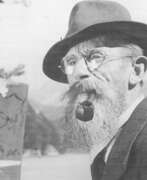

Toni Kirchmayr was an Austrian painter and restorer. He received his first artistic training from the native painter and poet Alfons Siber. He then took lessons in ornamental and fresco painting from the fresco painter Rafael Thaler in Innsbruck until 1903 and completed a further year at the private painting school Moritz Weinhold in Munich. On 1905 he started studying at the Academy of Fine Arts in Munich. He was headmaster of the Heymann painting school, did decorative and decorative arts painting for publishers and worked as an assistant to church painters and restorers in the summer, which gave him knowledge of fresco painting. He had to interrupt his studies in 1908/1909 for military service. After completing his studies in 1910, he settled in Innsbruck as a freelance artist. Shortly after the end of the First World War, in January 1919, he founded the Toni Kirchmayr School of Painting and Drawing in Innsbruck, which existed until his death and became the most important artistic training centre in Tyrol. Toni Kirchmayr created a versatile oeuvre ranging from landscapes, interiors and still lifes in oil to ornamentation and decorative art and large-format wall and ceiling frescoes. The landscape painting shows modern, colour-expressive features. Kirchmayr showed a special talent as a portraitist.
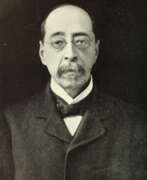

John La Farge was an American artist whose career spanned illustration, murals, interior design, painting, and popular books on his Asian travels and other art-related topics.
La Farge is best known for his production of stained glass, mainly for churches on the American east coast, beginning with a large commission for Henry Hobson Richardson's Trinity Church in Boston in 1878, and continuing for thirty years. La Farge designed stained glass as an artist, as a specialist in color, and as a technical innovator, holding a patent granted in 1880 for superimposing panes of glass. That patent would be key in his dispute with contemporary and rival Louis Comfort Tiffany.
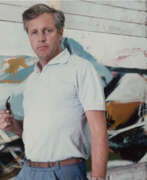

George Peter Lanyon was a British painter of landscapes leaning heavily towards abstraction. Lanyon was one of the most important artists to emerge in post-war Britain. Despite his early death at the age of forty-six he achieved a body of work that is amongst the most original and important reappraisals of modernism in painting to be found anywhere. Combining abstract values with radical ideas about landscape and the figure, Lanyon navigated a course from Constructivism through Abstract Expressionism to a style close to Pop. He also made constructions, pottery and collage.
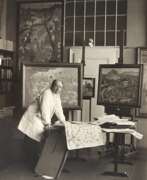

Oskar Laske was an Austrian architect and painter.
His favourite subjects were watercolours from his travels in Europe and North Africa. They are mostly landscapes, town squares and genre scenes. Laske is also known as a graphic artist and book illustrator.
Oskar Laske was a very prolific artist, and part of his rich legacy is linked to Ukraine and the Ukrainians, especially his hometown of Chernivtsi.


Paul Lehmann-Brauns was a German painter, known as a landscape painter.
Paul Lehmann-Brauns lived in Berlin, but found inspiration for his works in Hamburg, Potsdam, the Thuringian Forest and the Central German Uplands. The North Frisian Islands were his favourite subject.
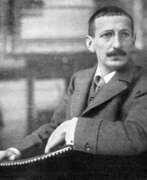

Walter Leistikow was a German painter of the late nineteenth and early twentieth centuries. He is known as a landscape painter, graphic artist, designer and art historian, a representative of the Jugendstil.
Early in his career Leistikow was one of the founders of the art group "Association of Eleven", which advocated modern art, rejecting academism. His landscapes, inspired by the Barbizon School, evolved toward simplification, sometimes with Art Nouveau influences. The artist sought to stylize landscapes, eschewing excessive detail in favor of silhouettes and blurred lines.
He also designed furniture, carpets and wallpaper, and in 1902 created trading cards for the Stollwerck chocolate company.
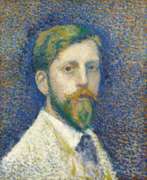

Georges Lemmen is a Belgian Neo-Impressionist painter, member of the XX Society. He was close to art from childhood and studied for a time at a special drawing school. In the early 1880s, as a teenager, he was introduced to the work of Edgar Degas and Henri Toulouse-Lautrec, which had a great influence on him.
Georges Lemmen's paintings were marked by the use of fine, clean strokes and a vivid colour palette. He used the technique of divisionism, applying strokes of pure colour in close proximity to one another to create a sense of optical blending and luminescence.
Lemmen's subject matter was varied: landscapes, portraits, interiors and scenes of everyday life. He often portrayed leisurely pursuits and the beauty of nature, infusing his work with a sense of tranquillity and harmony.
Until 1895, he abandoned pointillism to contribute to the development of Belgian Art Nouveau. He created many book illustrations, posters, ceramics, carpets, drawings, pastels and gouaches in this style.


Sonia Lewitska (Ukrainian: Sofia Pilipivna Lewitska) was a Ukrainian émigré artist who worked in Paris. She is known for her paintings and drawings in the styles of Cubism and Post-Impressionism with the influence of Ukrainian folk art.
